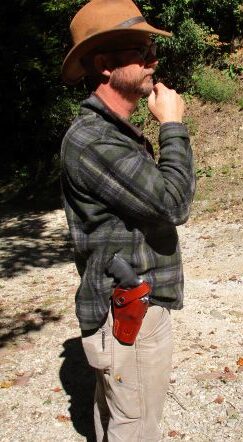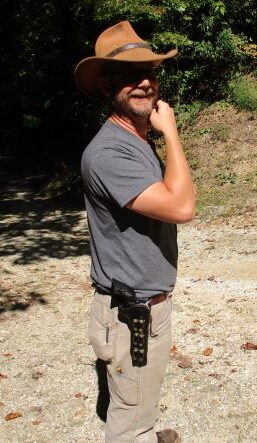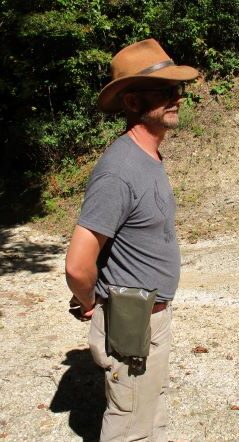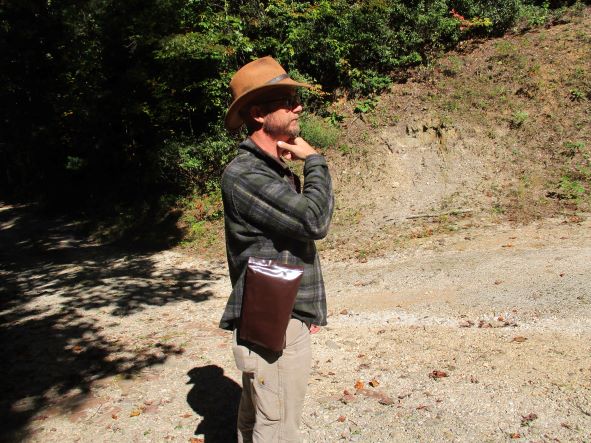
By Jim Dickson | Contributing Writer
I live deep in the woods of the North Georgia mountains and I am out in those woods night and day in all kinds of weather.
Keeping the pistol on your hip dry yet instantly accessible in the rain is a subject that I have never seen addressed in print. You can’t cover it with a raincoat or a poncho when you may need it fast and most times that you need a pistol you need it really fast. Sure you can just let it get soaked and then dry and clean it but that takes a lot of time and I am in what is often termed “The Appalachian Rain Forest” so that could easily turn into a full time job here during the rainy season.
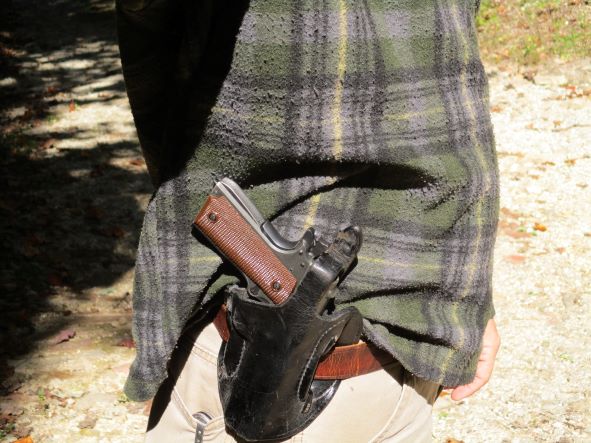
A rain cover over the pistol and its holster is called for but it has to be instantly removable. Such a cover can easily be made from old LRP and MRE ration bags. These are durable heavy plastic that stay in place yet can be quickly snatched off. Trim the bottom edge of the bag and measure from the bottom of the top seam down. Here are the dimensions that I used on covers for 4 different holsters.
For my Colt .45 SAA in an El Paso Saddlery duplicate of John Wesley Hardin’s Holster I used a Viet Nam War-vintage Long Range Patrol Ration pouch as it is narrower than the MRE pouches and a better fit for this gun. To make it measure down 4 inches from the top seam and 1¼ inches back from the front edge. Now cut a 2-inch-wide slot all the way down coming out at the bottom 6 inches from the top cut.
Slide this over the gun until the top of the slot stops at the top of the pistol belt with the rest of the pouch covering the outside of the holstered pistol. It can be removed fast by either flipping it off with your thumb as your hand rises up to grab the gun’s grip or you can jerk it off with your left hand much as some folks use the left hand to remove a flap or a safety strap while drawing the gun with the right hand.
This gives far more protection from the rain than you might think and more importantly, it is the most protection that can be quickly discarded if that bear 10 feet away suddenly loses his temper. I have never had to shoot one of the bears around my place in Georgia but I have never completely trusted them either. A lot of that stems from my time in the Alaskan interior where some of the bears were genuine man-eaters. I like to have a .45 when I am around them.
Always remove the sharp edge at the end of the hammer spur before using any Colt Single Action Army revolver. This comes from the factory razor sharp for it is where two polished surfaces meet. Take a file straight on against that cutting edge then polish it with a stone. It won’t show and more important, it won’t draw blood when it inevitably gets shoved against you. If you don’t take this edge off it will quickly cut through any cover you place over it.
For a M1911A1 in a pancake holster I use the larger MRE bag. The Army issue ones are heavier than the commercial ones but both work well. (Some of the commercial MRE’s have considerably less food in them than the Army Issue versions.) Since this holster is canted, the top slot is canted as well at the top. It is 5 inches down from the top seam at the front and 5½ inches down at the rear of the top slot. Due to the wide belt engagement the slot is 3 & ½ inches wide and 1¼ inches from the front edge.
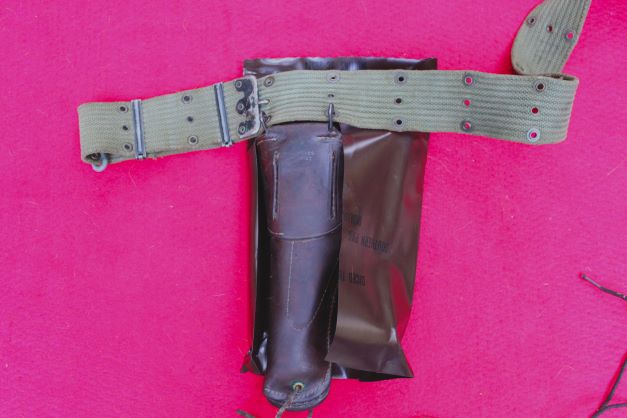
The M1911A1 Model 1916 holster cover has a slot 2½ inch wide slot two inches down from the top seam and 1 inch from the leading edge.
For a cover for the Army Issue magazine pouch with a loop that slides over the pistol belt take a LRP ration bag and cut the bottom off 6½ inches below the top seam. Now go down 1¼ inches and make a slot for the belt 4½ inches wide centered on the pouch.
The stainless steel 4-inch barrel on the .45 Colt Ruger Redhawk in the Ruger Company’s holster made by Galco fits in an MRE pouch with a 2½ -inch wide slot four inches down from the top seam and one inch back from the front edge. This one is a bit oversize for the above mentioned SAA but it will work on it in a pinch as well.
Stainless steel is a welcome thing in the rain but it should always be remembered that while stainless steel is rust resistant it is not entirely rust proof and should receive the same care as a carbon steel blued finish gun.
Also not all stainless steel guns have all their parts made of stainless steel. You often find some carbon steel parts mixed in. In addition, there is no standard stainless steel used in firearms. Some have good corrosion resistance and some are hardly worth the name stainless. It’s best to treat stainless steel guns the same as carbon steel guns and just be thankful for whatever extra margin of safety against corrosion your particular gun has. All of them should have rain covers in the rain.
Since these bags all look alike, it is a very good idea to take a Magic Marker and write which gun they are for.
When using a gun in the rain it is vital to use the German Ballistol oil imported by Washington Trading Co. in Kittyhawk, NC 27949, phone 1-800-253-2460. Ballistol forms an emulsion when it contacts water and as long as that emulsion remains at least 5% Ballistol the water will evaporate off without causing rust leaving the Ballistol behind. This miracle oil was developed for the German Army in the early 1900s to be used on all the soldier’s equipment be it metal, leather, or wood. It is without equal and indispensable for use in the rain. It is permissible to dunk a pistol in a bucket of Ballistol in an emergency.
Unlike WD-40, which is a moisture displacing oil, Ballistol does not kill cartridge primers so you don’t have to worry if you cleaned all the oil off the recoil plate in the revolver or the breech face in an automatic as you would when using WD-40 to dry a gun.
Every holster is different and may require different measurements. The above examples are simply listed for reference and to give you an idea of how to make these simple but surprisingly effective covers.

